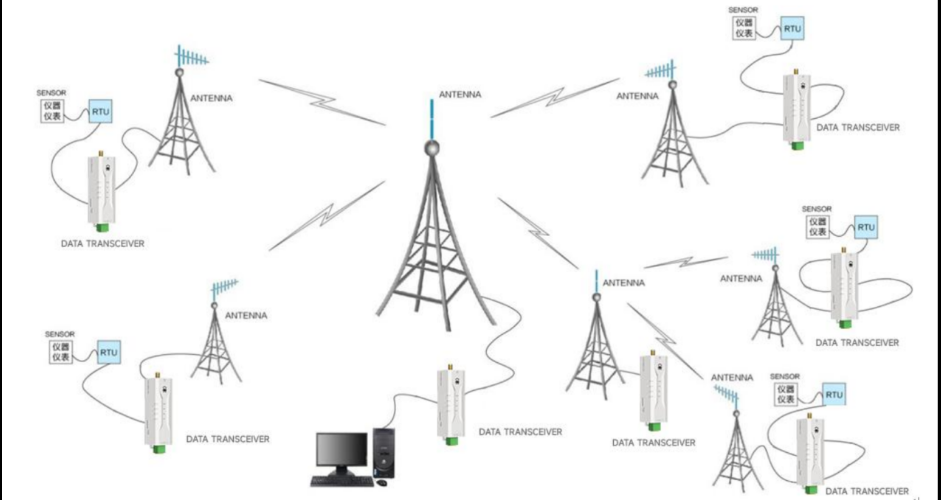RS485 is a widely used communication interface in fields such as industrial control, power communications, and intelligent metering. It utilizes a pair of twisted wires for differential transmission, with one wire designated as ‘A’ and the other as ‘B’. Theoretically, RS485 communication distances up to 1200 meters.
However, the actual transmission distance often differs significantly from the theoretical due to various factors in the field environment. These factors include the driver chip, type and material of the cable, communication rate, wiring method, and environmental interference.
Despite the potential to extend the RS485 communication range using high.performance driver chips, shielded twisted pair cables, adding terminal resistors, and reducing communication speed, these enhancements typically do not significantly exceed the theoretical limits. Therefore, other methods, such as relays, are necessary to further increase the communication distance.
- Wired Relay:
An RS485 wired repeater is a bridging device that connects two RS485 buses. It can automatically determine the state of the buses at both ends and switch the transmission and reception states to minimize delay.
RS485 repeaters can effectively suppress lightning (LIGHTNING) and ESD, providing up to 600W of surge protection per line against surges and transient overvoltages that occur on the lines. Moreover, minimal inter.electrode capacitance ensures high.speed transmission for the RS.422/RS485 interfaces, thus maintaining the stability of the 485 bus.
The isolation DC/DC module in RS485 repeaters completely isolates the power sources at both ends. This helps in isolating the 485 buses from each other, preventing common ground interference.
Additionally, using RS485 repeaters allows for a reduction in the length of each transmission stage, which can enhance the transmission rate.
- Wireless Relay:
Wireless relaying means that data exchange between two RS485 devices no longer requires a direct RS485 bus connection but uses a wireless device to connect them.
- Using a wireless data radio as an RS485 wireless relay device:
A wireless data radio, as a communication medium, offers real.time, reliable data transmission under special conditions within a private network. It features low cost, easy installation and maintenance, strong diffraction ability, flexible networking structure, and extensive coverage. It is suitable for applications with many dispersed points and complex geographical environments and can connect with PLCs, RTUs, rain gauges, level meters, and other data terminals.
4. Using LoRa solutions in wireless data radios:
1. Long communication range: LoRa can achieve a communication distance of up to 5 km at 100mW power, which typically requires two transceiver devices to match the distance that would otherwise need four wired relays.
2. Convenient device connection: Due to the omnidirectional nature of electromagnetic waves, device connections can break free from the traditional wired connection methods. A primary device can connect to all devices within the communication range simultaneously, forming a star network topology. The Ebyte E95M.DTU(400SL22.485) also supports a wireless relay mode, allowing multi.level relay networking to effectively extend communication distances for ultra.long.distance communications.
3. Data packet delay: Due to the length of data packets and factors such as wireless communication distance, each packet experiences varying degrees of delay.
5. Using 4G solutions in wireless data radios:
1. Wide communication range: Leveraging the 4G network allows for plug.and.play capabilities in cities and rural areas with extensive 4G coverage.
2. Monitored data: 4G DTUs transmit data to servers, which then forward it to receiving devices. This process allows data to be recorded on the server, facilitating data analysis.
3. Networking requirement: Since it relies on the 4G network, the device must be installed in a location with 4G connectivity, which is not suitable for remote and unpopulated areas.
4. Network fees: Existing 4G IoT providers charge for IoT data traffic, and users must pay these fees to use the network functions of the device.
In summary, while it’s possible to extend the RS485 communication distance through high.performance driver chips, shielded twisted pair cables, adding terminal resistors, and lowering communication speeds, if these methods prove insufficient, relays can be used to further extend the communication distance.






